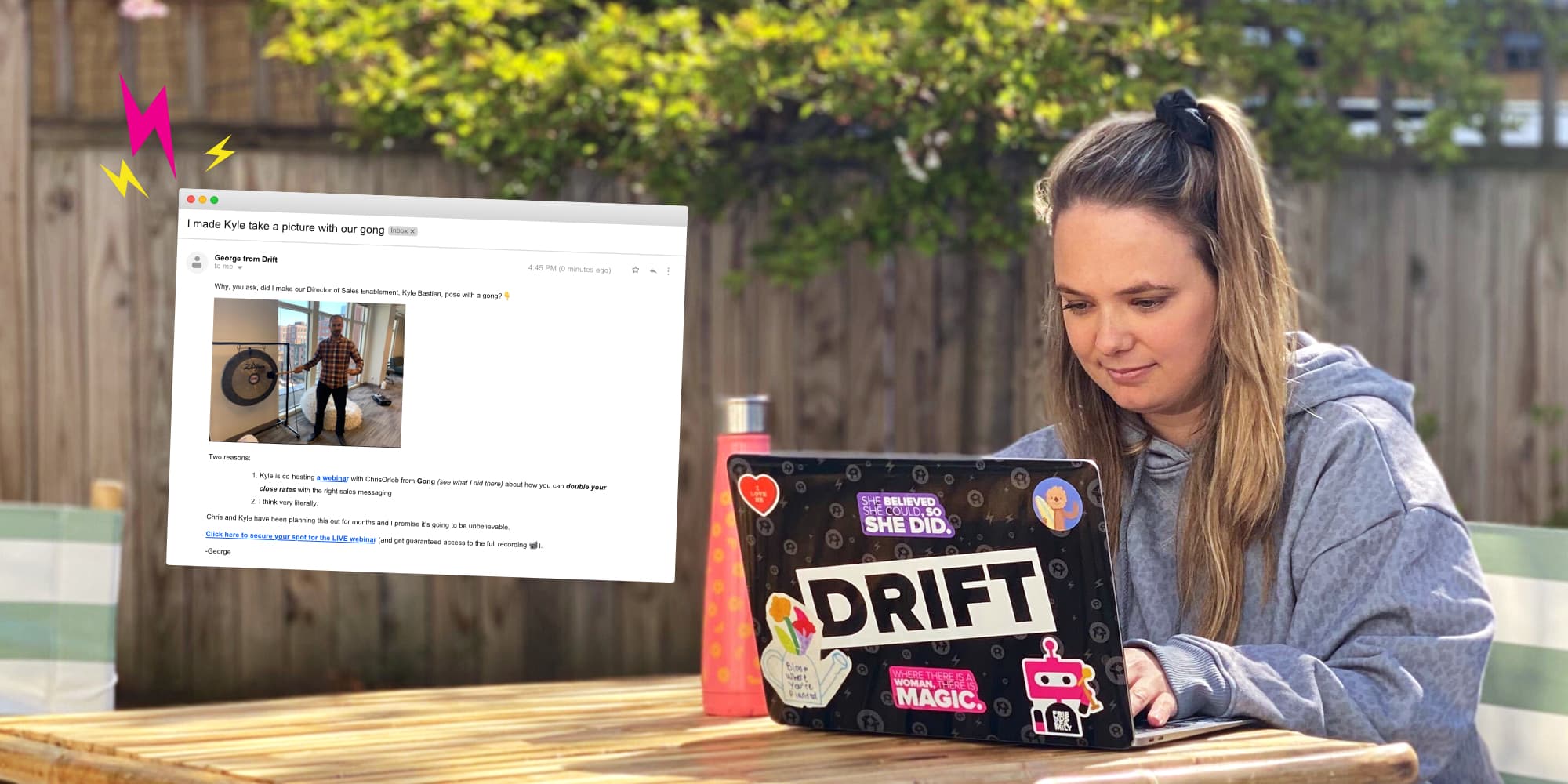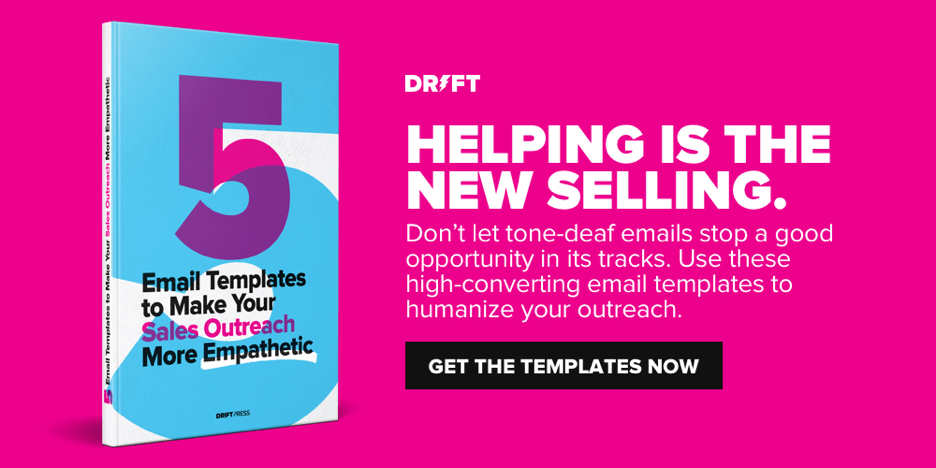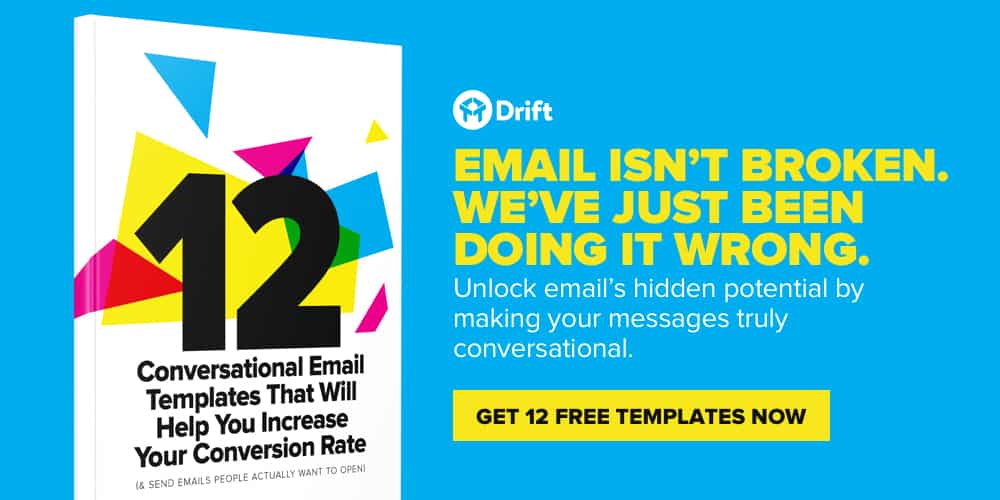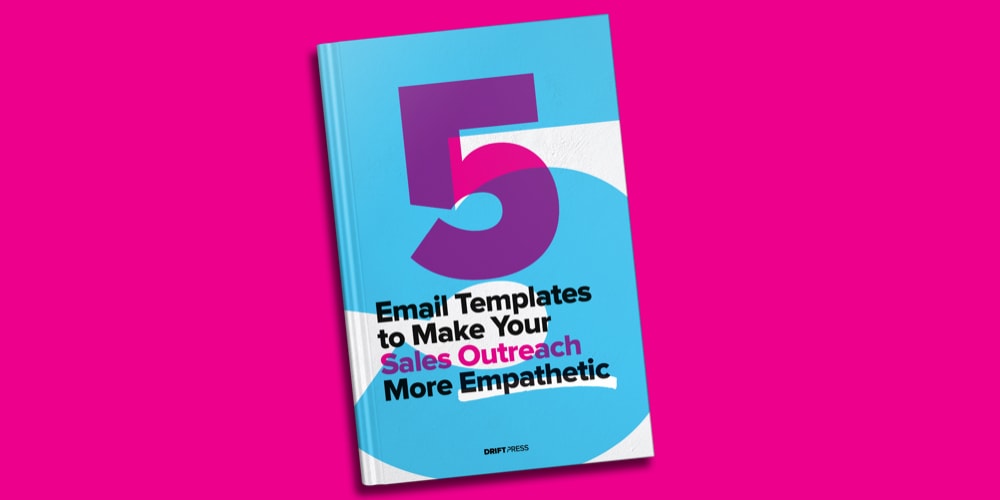
With B2B events canceled (or moved online), it’s time to think outside the box.
Cold emails can be a great way to reach leads and make connections – if you do it right.
I know a personalized email isn’t the same thing as a handshake on the tradeshow floor, but adding a little empathy into the marketing mix never hurt anyone.
That’s why both personalization and personality are critical to your cold email success.
As businesses figure out what’s next (and people like being prospected less than ever), you’ll need both.
But a lot of people (especially in sales) may think of “personalization” as simply inserting a {variable} into a cold email campaign.
If you have their first name in the subject line, you boost open rates, right?
Sure – but why stop there?
Instead, consider how to use variables without making the email sound like a cold email and how to incorporate actual personality into emails.
What’s the Difference Between Personalization and Personality?
Cold email personalization will get you better open rates. Personality in your cold emails will get you the best response rates, conversion rates, and ROI.
Neil Patel (arguably the king of informal, actionable content) places creativity and sincerity as two of the best ways to fix cold outreach ROI. Personalization is the third approach. Taken altogether, these create a personality for your cold outreach.
Here’s how I see it:
- Personalization: using variables to make cold emails and mass communications sound more authentic.
- Personality: building a presence into all of your content so it sounds like it’s coming from a real human trying to connect with another real human.
They both have an important role in sales prospecting and digital marketing. But personalization is a given, and personality will set you apart.
This isn’t exactly new. Drift has written before on how to humanize B2B brands and how to bring conversational marketing to sales and marketing. The big takeaway? Be authentic and personal.
But that’s easier said than done as you scale cold outreach to thousands of emails. Here’s our breakdown for how to bring both personalization and personality to your cold email campaign.
First Up: Keep it Confident & Consistent
Creating and maintaining a ‘brand voice’ shouldn’t be limited to public marketing collateral and website content.
When you send a follow-up email in your cold campaign, maintain the same voice, and keep with a confident tone. Not “Sorry to bother you again…” but “Hey, wanted to run this past you…” with something unique to follow.
Finally: don’t go about creating cold emails willy nilly. No sales rep or marketer should be content to let the {variables} do all the work for you. Variables will keep things personalized, but they won’t keep things consistently personable.
To get there, first determine why you’re writing these emails in the first place, what you want to say, and how you want to say it.
- Why: ‘To make a sale’ is not the right answer. Go deeper, asking what specific benefit you want to offer your specific prospect list (remember, hone your target list first). If you know the ‘why’, you’ll craft a much more compelling cold email.
- What: What are you trying to say and what do you want your cold email to accomplish? Don’t get distracted or include something just because it’s conventional. There shouldn’t be any such thing as a conventional cold email, these days.
- How: If you know Drift, you know they’re committed to writing how they talk. That goes a long way, whether you’re engaging your audience through blog posts or cold emails. Do you want to use GIFs? Links? Do you want it to be short and to the point? Insightful?
How to Use Variables the Right Way to Spice Up Your Cold Emails
The typical low-hanging fruit for ‘personalization’ in cold email are name and company in either the subject line or first line of the email.
Yes, this approach works for the most part. But many pros will see right through it.
You can use personalization to greater effect by first taking a step back in your process.
How? Three words: Hone. Your. Targeting.
One of Drift’s best sales prospecting tips is: take the time to get to know your prospects first.
One way to build this into your cold email campaigns without burning time is to narrow your outreach list using the advanced search on LinkedIn Sales Navigator.
You can narrow your lists down by location, position, company size, and keyword. But you can get a little more original. Here are a couple of ideas:
- Utilize ‘trigger events’: One advanced filter is to search for prospects who have changed jobs in the last 90 days. Use that in your opening line: “Hey, congrats on the new position!” You can also use the same search criteria every month as new prospects get added to the pool.
- Highlight 2nd-degree connections: Create a separate list for prospects you share Connections with on LinkedIn. It will narrow the scope but widen your opportunity for engagement.
- Build rapport from the get-go: Use ‘school’, ‘interests’ and ‘past companies’ in the advanced filters to find commonalities you can include in your first email.
With these narrowed down lists, you can customize your variables accordingly. Make sure your list is formatted correctly, then create variables for:
- Links: Did you curate your cold email list based on point of interest or LinkedIn group, but now you’re combining lists? Include a relevant resource to keep them distinct.
- Past company: “I saw that you worked at Zoom – seems like that would be an awesome experience!”
- Position: “What are you looking to accomplish in your first few months as Director of Marketing?”
- 2nd-degree Connection: “I saw that you’re connected with [industry leader] and thought it was worth reaching out.”
These will get you started, at least. Adapt the approach depending on your industry, cold email goals, and scale.
Yes, it’s slightly more time consuming than sending out indiscriminate cold emails to thousands of prospects at once. But this step will get you a better response rate because your prospects will be more likely to feel you’re speaking to them.
3 Ways to Build Personality Into Your Cold Email Campaigns
Building personalization into your cold email campaign is easy. Choose a tool that has the ability to insert custom variables and boom: you’ve arrived.
You can customize by first name, company name, and even vertical.
But personalization is the norm these days. You’re going to have to do better to stand out.
After sending thousands of cold emails (to great effect), these are our three takeaways for building personality into your cold emails. With the right approach, your cold emails won’t sound like cold emails at all. These tips will get you on the right track.
Focus on the Person
Before jumping into the specifics of how to build personality into your cold email campaigns, let’s home in on the core of what we’re talking about: focus on the person.
Cold email isn’t your chance to sell. At least not right off the bat. Whenever possible, make the initial email about them, not you. Especially these days, you can build empathy right into the cold email. Ask them how they’re holding up. If they’re in an industry affected by the crisis, hold off on the pitch altogether, instead making the CTA about a piece of content or virtual event.
To support this mantra, we have a handful of (unofficial, unwritten) rules in our cold email campaigns:
- You’re not making a pitch around your value prop. You’re speaking to a problem they have. Make sure you identify that problem first.
- Make the first and last lines about them.
- Use humor whenever possible.
- Don’t get stuck using templates. Yes, you need templates to scale cold email. But you don’t always have to use a template, especially for high-value prospects.
Use Video
Remember what I said about not always sticking to your templates?
As you identify higher value leads and accounts, you’ll need even better ways to stand out from the crowd.
You can use video in your cold emails to both save time and send a more compelling, engaging message.
Read More: 3 Ways to Use Drift Video for Sales Prospecting
Used in the right cold email, a video will:
- Grab your prospect’s attention. Break from the mold and you’ll most likely get noticed.
- Personalize your message. Take an extra minute to record a personalized message – or at least include the prospect’s name in the thumbnail.
- Show your personality. Remember, this isn’t just about personalization – it’s about showing off your personality. A video is a much better medium than plain text for doing just that.
Include Relevant Resources
Cold email is one way to fill the gap created by canceled B2B events. Try taking that mindset in your next campaign.
One tried-and-true cold email trick is to make it feel more like a networking email than a sales prospecting email. That’s why ‘Quick question’ can work so well as a cold email subject line.
But take it a step further by incorporating something of value into your emails. Go beyond just your own, branded content. Collateral has a time and place, but prospects have come to expect it.
Instead, keep a rolling list of articles, videos, or LinkedIn posts you find interesting and relevant to your prospects.
Drop these resources into your cold emails, especially if they’re relevant to the variables in your lists (interest, position, department, etc.).
Accompanied by an informal, indirect CTA (“What are your thoughts on this?”), the inclusion will likely pique your prospects’ interest.
Signing Off
There’s no ‘right’ or ‘wrong’ way to go about cold email campaigns. There are only cold emails that get responses – and those that don’t.
These days, you can turn a cold email into a digital handshake with empathy, personality, and (yes) personalization.
Are you doing everything you can to create cold emails that convert?
Brooklin Nash is Head of Content at Wiza.co. Use Wiza to quickly create email lists from LinkedIn Sales Navigator — use GIFs to win his heart.







